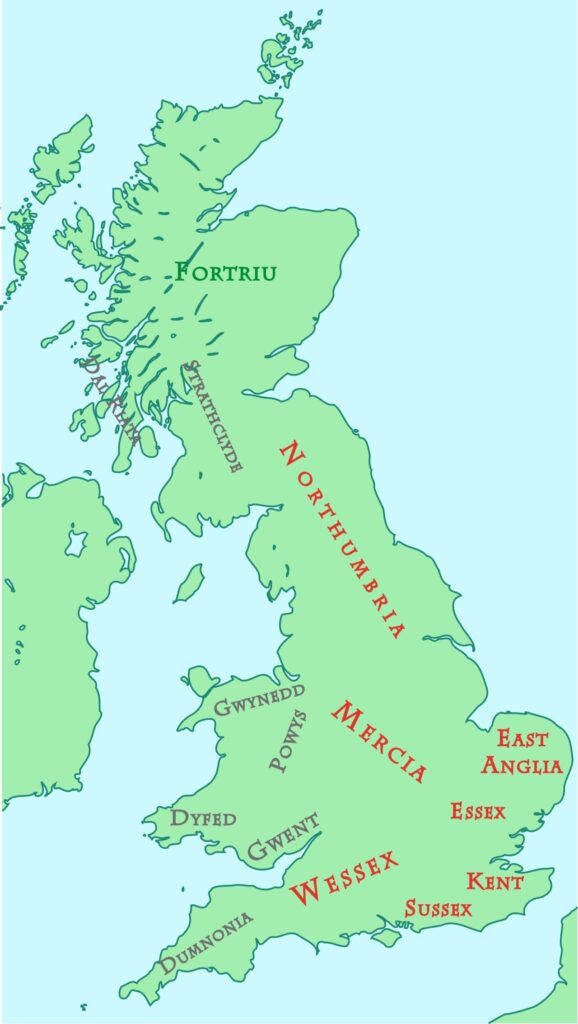The Seven Kingdoms of Old England: The Kingdom of the East Angles

On 14 June 1939, light broke into the darkness that had shrouded the so-called Dark Ages for centuries. For on that day, as storm clouds were gathering in Europe, archaeologist Basil Brown opened the burial chamber of the great ship burial at Sutton Hoo.
Over the next few weeks, archaeologists discovered the extraordinary riches that a Dark Age king could command. That king was probably Rædwald, and he is the first king of the East Angles of whom we know anything more than a name. The people who settled in the land almost cut off from the rest of country by the Fens were Angles, split into the North Folk and the South Folk (names that continue to this day as Norfolk and Suffolk). The kings of the Angles traced their lineage back to one Wuffa, making them Wuffingas (‘sons of the Wolf’).
Rædwald became king of the East Angles in the early seventh century as the power of Æthelfrith of Northumbria was steadily growing. However, the two kingdoms were separated by the Fens and the kingdom of Lindsey (another Anglo-Saxon kingdom roughly corresponding to Lincolnshire that is not numbered among the Heptarchy although it probably should have been), so Rædwald was happy to give sanctuary to a fugitive Northumbrian prince, Edwin.
But when Æthelfrith learned that Edwin had taken shelter with Rædwald he sent a series of messengers, bearing increasingly explicit threats, demanding Edwin’s head. Rædwald vacillated, then decided to fight. With Edwin, he defeated and killed Æthelfrith, installing Edwin on the throne of Northumbria and becoming himself Bretwalda, the pre-eminent king in Britain, until his death around 626.
His successors fought a series of unsuccessful campaigns to retain their independence from the rising power of Mercia, campaigns that usually ended with the East Anglians having to find a new king. The East Anglians continued to kick against Mercian supremacy throughout the eighth century and they managed to regain their independence in the ninth century, only to be conquered by the Great Heathen Army in 869. The last independent king of the East Angles was Edmund the Martyr, who was venerated after his death by the newly Christian children of the Vikings who had killed him. These Christian Vikings, who had settled in East Anglia, created the shrine of Bury St Edmunds to commemorate an Anglo-Saxon king.
0 Comments